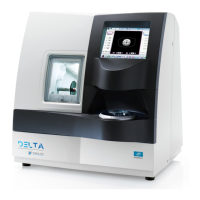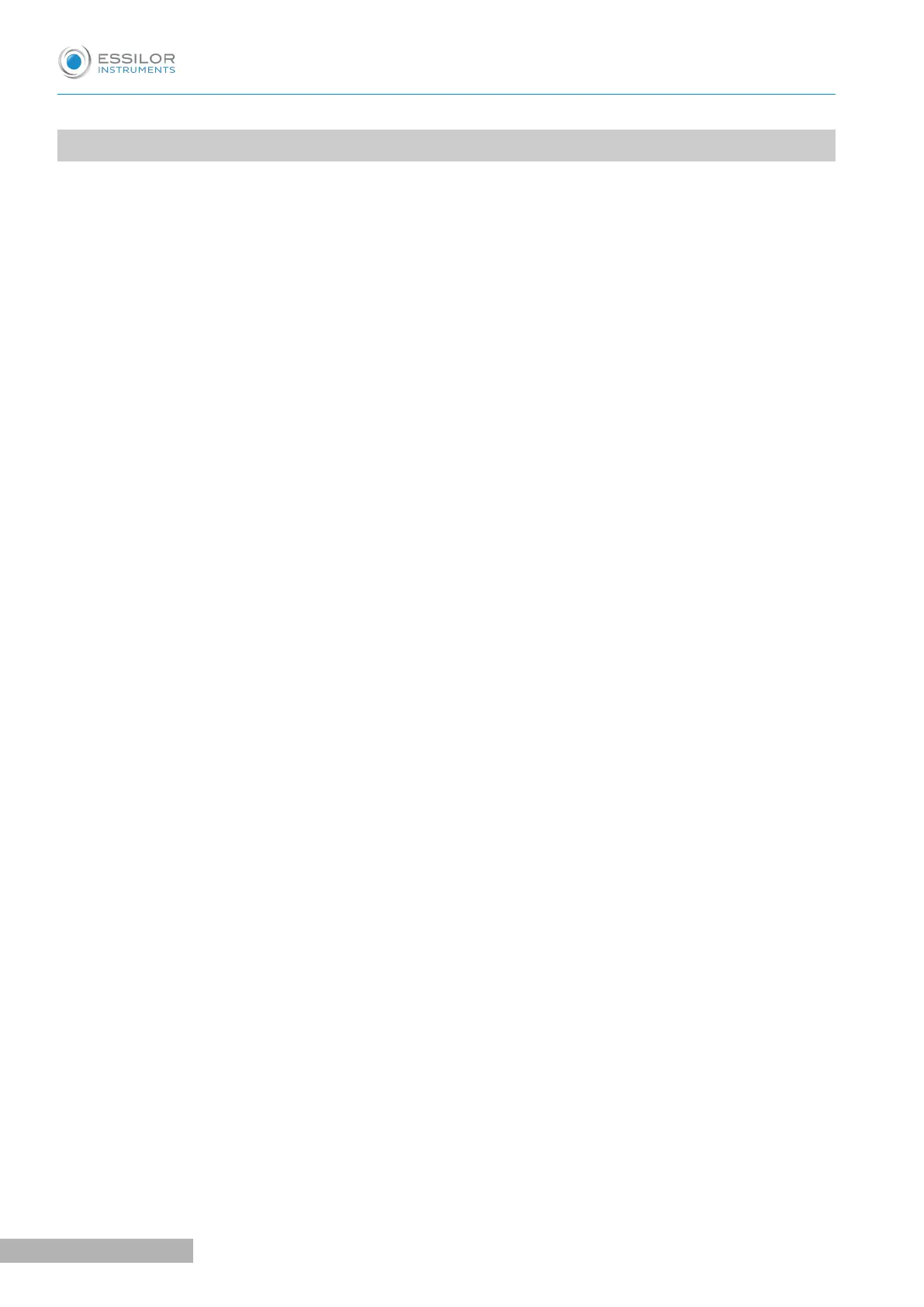4. “EDGER” FUNCTION
Grinding in Boxing center mode (passive) or optical center
Automatic initialization
Tool wear indicators
Types of finish:
• Bevel:
◦ automatic bevel
◦ customized bevel: tracking of the frame base, circle tracking, distributed bevel (%), front-surface
tracking, rear-surface tracking, partial and total adjustment
◦ distribution value: modification step of 0.1 mm or 5% (distributed bevel)
• Flat-edge
• Grooving:
◦ automatic groove
◦ customized grooving: frame base tracking, distributed groove (%), front-surface tracking, rear-
surface tracking, partial and global adjustment
◦ adjustable groove width and depth
◦ groove depth between 0.20 and 1.20 mm; modification step: 0.05 mm
◦ groove width between 0.55 and 1.20 mm; modification step: 0.5 mm
◦ distribution value: modification step of 0.1 mm or 5% (distributed groove)
• Chamfering:
◦ chamfer adjustable on front surface and rear surfaces
◦ small chamfering by default: 0.20 mm
◦ large chamfering by default: 0.40 mm
• Drilling:
◦ automatic adjustment of drilling angle according to lens curve up to 15°; modification step: 0.5°
◦ hole diameter: 0.8 to 3 mm; modification step: 0.05 mm
◦ types of drilling: through-hole, non-through hole, straight or tilted notch, slot and spot-facing
◦ maximum number of drilling points per lens: 20 (with a restriction of 10 max per side)
◦ no-drill area: diameter of 29 mm from the boxing center
3-D preview of the bevel and groove before the start of the cycle
Self-learning of work habits
Edging pressure varies according to the material to be edged
Automatic wheel cleaning cycle
Lens edging capacity:
• Max. diameter: 105 mm (90 mm with a decentration of 15 mm)
• Min. B-dimension: 17 mm for flat edge, 18.5 mm for bevel
3 or 4 wheel versions (depending on the material): glass lens, plastic, polycarbonate, medium or high index
and Trivex lenses
TM
, polishing

